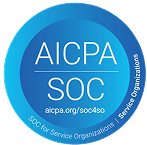Emergency funds for international students: How to prepare before you need one
That’s why building an emergency fund isn’t optional – it’s essential.
The good news? You don’t need thousands of dollars saved to protect yourself. Even a small, intentional safety net can buy you peace of mind and give you breathing room when the unexpected happens. Having an education loan comparison strategy is also important – some emergencies can be smoothed over by flexible, transparent loan support.
What counts as an “emergency” for international students?
Emergencies aren’t just car crashes or major surgeries. For international postgraduate students studying overseas, common financial disruptions include:
-
- A delayed optional practical training (OPT) start date, leaving you without income for two to three months
- A surprise medical or dental expense not fully covered by student insurance
- Visa renewal travel or embassy fees
- Moving costs tied to internships, co-ops or housing changes
- Lost or stolen laptops, phones or ID documents – often expensive to replace fast
- Temporary gaps in housing or food access, especially during school breaks
- A delayed optional practical training (OPT) start date, leaving you without income for two to three months
If it affects your ability to live safely or continue your studies, it counts as an emergency.
How much should you save?
The right amount depends on where you live, your visa situation and your work eligibility. But a good general guideline:
-
- Short-term buffer: Start with US$300–US$500
- Longer-term goal: One to two months of living expenses (US$1,000–US$3,000 for most students)
- Short-term buffer: Start with US$300–US$500
Even if you’re on a tight budget, building this fund slowly is better than not at all.
Tip: Treat emergency savings as a non-negotiable category in your budget – just like rent or tuition.
Where to keep your emergency fund
Your emergency fund should be:
-
- Accessible: A checking or savings account you can tap into immediately
- Separate from your spending money: So you’re not tempted to use it for everyday costs
- In your local currency: Avoid delays or conversion losses when you actually need the money
- Accessible: A checking or savings account you can tap into immediately
Don’t keep your fund in cash, and avoid tying it up in long-term investments. This isn’t about growth – it’s about availability.
What to do if you can’t save much right now
If you feel like budgeting for university students is leaving you stretched thin, try these strategies:
-
- Set aside just US$10–US$20 per week.
- Use part of a scholarship, tax refund or stipend to jump-start your fund.
- Pick up on-campus shifts (if visa-eligible) and save that income separately.
- Cancel or pause nonessential subscriptions for one to two months and bank the difference.
- Funnel small financial gifts or side earnings (like tutoring or research stipends) into savings.
Emergency funds grow slowly – and that’s okay. The key is starting.
Financial tools to fill the gap when savings fall short
Sometimes an emergency hits before your savings are ready. That’s when responsible borrowing can help prevent your crisis from turning into a long-term setback.
MPOWER Financing offers international students flexible loans for students without a cosigner that can support:
-
- Unexpected tuition gaps
- Visa-related costs or relocation expenses
- Technology or equipment replacements
- Living expenses during job search transitions
- Unexpected tuition gaps
You can borrow between US$2,001 and US$100,000 without needing a cosigner or credit history. And because MPOWER’s application is 100% online, you can check eligibility and receive funding support quickly if you’re facing an urgent need.
Plus, every MPOWER borrower gets free access to Path2Success, a platform with international student resources like budgeting tools, career planning support and guidance for navigating OPT or curricular practical training (CPT) transitions – so your finances stay stable even when life isn’t.
Start small. Stay ready.
An emergency fund isn’t about perfection – it’s about preparation. Whether you’re working toward your first US$500 or saving for postgrad job gaps, the goal is the same: giving yourself a cushion so the unexpected doesn’t derail your future.
Start where you are. Save what you can. And remember: even small savings can prevent big problems when it matters most.

